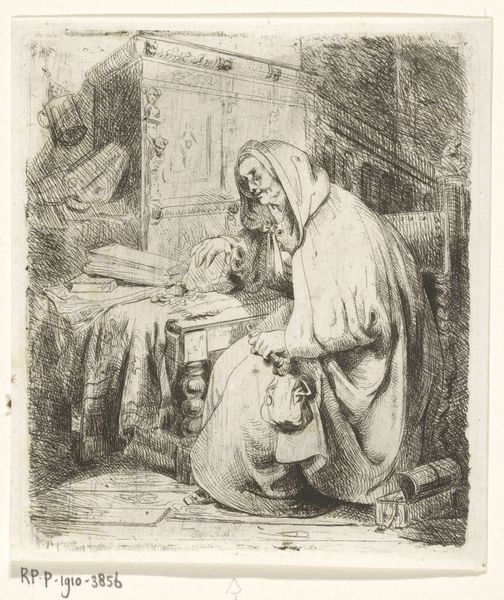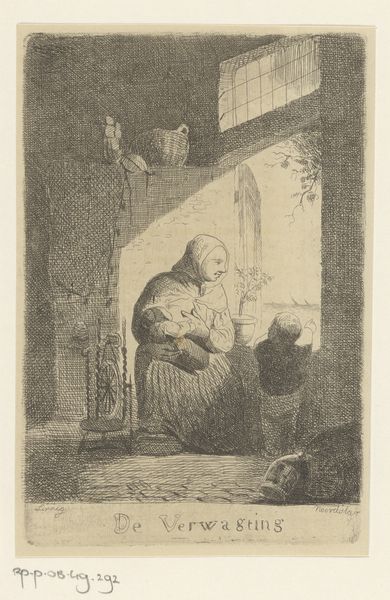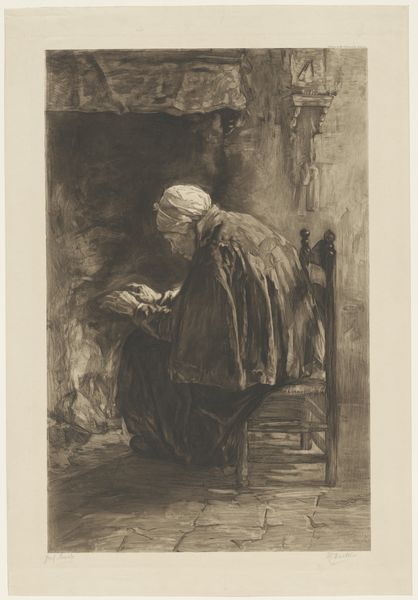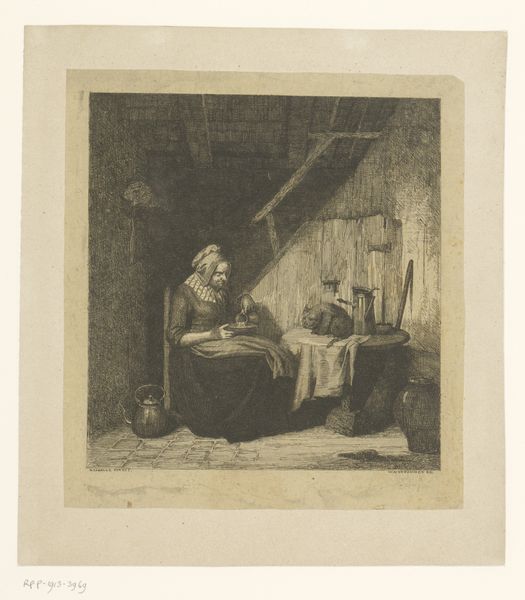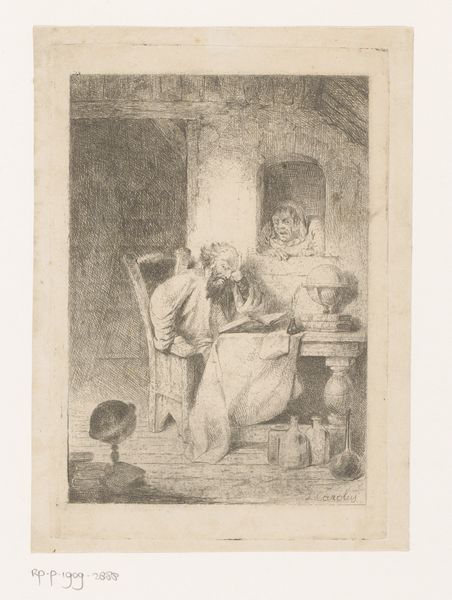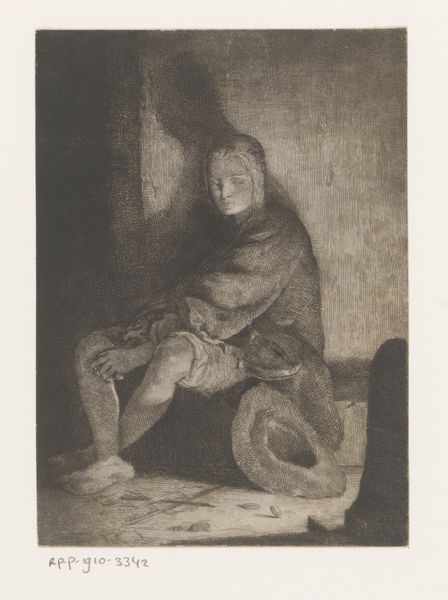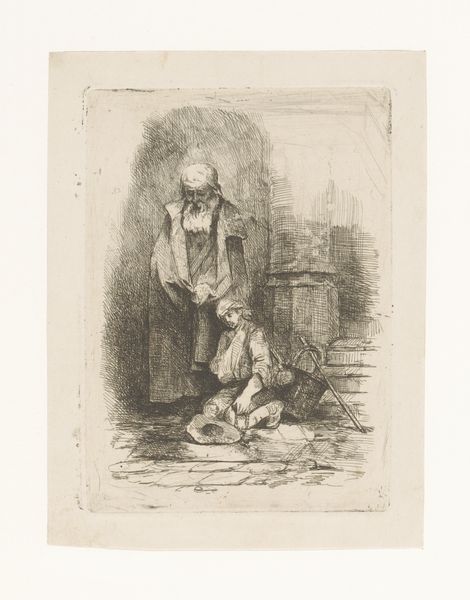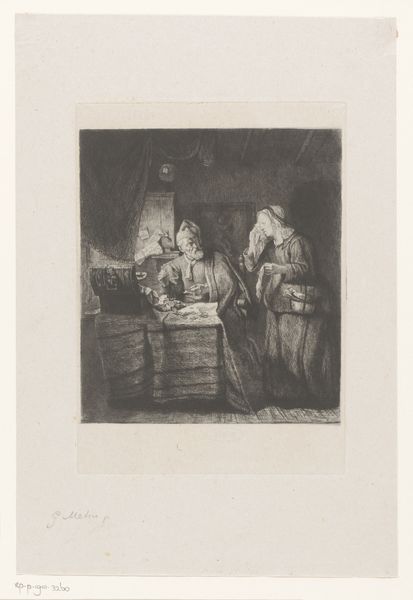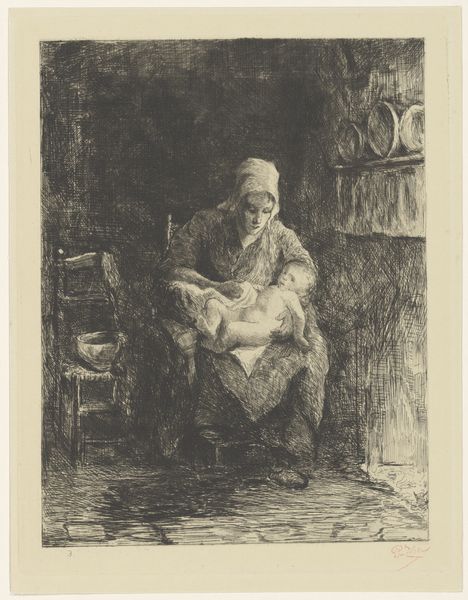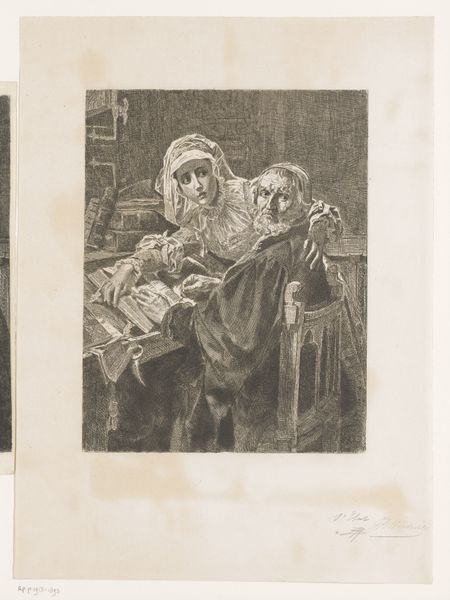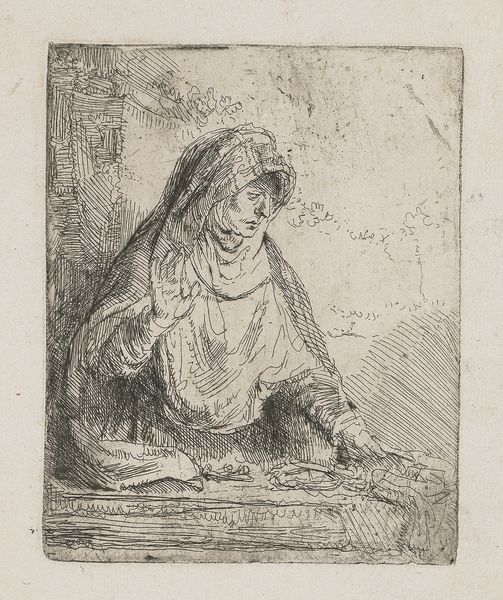
Dimensions: height 124 mm, width 106 mm
Copyright: Rijks Museum: Open Domain
Editor: We’re looking at "Dame telt geld aan tafel," which translates to "Lady Counting Money at a Table" by Joseph Ignace Van Hoey, made sometime between 1824 and 1892. It’s an etching, isn’t it? The crosshatching gives it such a somber feel. What strikes you about this work? Curator: Somber is a great word, isn't it? It makes me think of my grandmother hunched over her bills, only this is rendered with such a quiet dignity. Look at the way Van Hoey uses light; see how it catches the woman's face, but leaves the chest and corners in shadow? The etching creates this lovely contrast, doesn't it? It's almost as if he's using light to say something about what's brought to the surface versus what we choose to keep hidden, in shadow. Do you see it? Editor: I do, yes! The light definitely focuses our attention. I noticed she’s also wearing what looks like a simple cloak, which emphasizes that sense of quiet dignity. Is that a common element in genre paintings of this era? Curator: Well, the Romanticism of the time definitely glorified everyday life, seeking beauty and emotion in ordinary scenes like this one. And yes, simple clothing and interior settings can sometimes be a symbol for honesty or perhaps modesty in the face of new money, don't you think? The woman seems to be involved in such a simple act: counting money, as though her life is at stake! This intimate focus almost invites us into her world. A very human world. Editor: It’s so true. I had initially seen the piece as simply sad, but I hadn’t noticed the more subtle nuances. The intimacy changes everything. Curator: Exactly. And that's the magic of art, isn't it? We come in with one idea, and then something, a play of light or shadow, whispers another story.
Comments
No comments
Be the first to comment and join the conversation on the ultimate creative platform.
